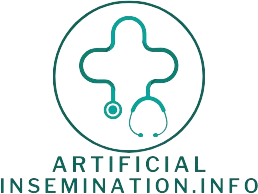Home insemination with donor sperm
Home insemination is one of the cheapest and easiest ways to try for a baby with donor sperm, and it is the only type of artificial insemination you can do without a medical professional.
Video: How to self-inseminate for conception
Watch the step-by-step video below to learn how to perform home insemination. A benefit of using home insemination is that the treatment can be performed alone or with the assistance of your partner or a trusted friend.
What is home insemination?
Home insemination, also called ICI treatment (Intracervical Insemination), is a type of artificial insemination that allows you to perform the procedure yourself in the comfort of your home. When using home insemination to enter parenthood, it is possible to use your partner’s sperm or sperm from a donor.
Who uses home insemination?
Home insemination is popular amongst women who never experienced fertility problems. Therefore, many lesbian couples and single women prefer to begin their journey towards parenthood with home insemination, as it is the simplest and cheapest method of artificial insemination.
How do I know if home insemination is right for me?
If you are about to enter fertility treatment and have never had any fertility issues, home insemination could be an option for you. Before you start the search for a sperm donor, we recommend consulting a doctor to ensure that you can use home insemination.
Learn more about home insemination
How to perform home insemination
If you have decided to do home insemination, the first step is to find a donor and order enough sperm straws for treatment. Once you have ordered the sperm, you will receive a home insemination kit with detailed instructions included. It is important that you ensure that your ovulation has occurred, and the timing is right for the insemination to give you the best chance of success. Read our step-by-step guide to home insemination here below.
Step-by-step guide to home insemination
- Step 1: Remove the sperm straws from the packaging.
- Step 2: Let the straw sit at room temperature for 15-20 minutes.
- Step 3: Place the thick end of the adapter on to the syringe.
- Step 4: Clean the straw with the alcohol pad.
- Step 5: Use a pair of scissors to cut one side of the straw open.
- Step 6: Place the open straw into the thin side of the adapter (placed on the syringe)
- Step 7: Keep the syringe upright and draw the sperm into the syringe (pull until the straw is empty).
- Step 8: Now lie down on your back in a comfortable position and raise your hips using a pillow.
- Step 9: Insert the syringe as far as possible into the vaginal canal. Slowly inject the content of the syringe and remove the syringe slowly.
- Step 10: Lay still for approximately 30 minutes.

How much does home insemination cost?
The cost of home insemination can range from $1,150 to $1,810 and includes donor sperm, shipping, and a home insemination kit. The price varies based on your choice of sperm donor, sperm motility, and how the sperm is shipped. For example, if you purchase the two straws of ICI MOT10 (the recommended amount), the cost should be around $1,200, shipping included.
Follow the link to learn more about the cost of home insemination compared to other fertility treatments.
What are the success rates for home insemination?
Success rates vary from one woman to another as they depend on several factors, such as health, fertility, BMI, age, and luck. The success rate of home insemination is slightly lower than the success rate of IUI treatment. According to this study, the success rate for IUI is around 18 % per cycle for women under 30 and the rate proportionately declines with age.
Home insemination is most successful for women without fertility issues. To increase your chances of pregnancy, we recommend tracking your ovulation for a couple of months and consult your doctor for professional advice before starting treatment. Follow the link to read out tips on how to make home insemination successful.
How long does it take to get pregnant after home insemination?
It is difficult to estimate how long it takes for you to get pregnant after home insemination, as success rates vary a lot from one woman to another. But the general success rate for IUI is approximately 18% and it is widely known that home insemination is slightly less effective than IUI.

How to purchase sperm for home insemination
You can buy sperm for home insemination on our website. Simply start by creating an account, find the donor you like, order in time for your next ovulation, and have it delivered to your front door. Order two ICI or IUI MOT10 straws for home insemination.
Finding the right donor can be overwhelming and difficult. Follow the link to read our guide containing the most important things to consider when choosing a sperm donor.
What should I order for home insemination?
We recommend ordering two ICI or IUI MOT10 straws for home insemination. Most women need more than one insemination before receiving a positive pregnancy test. As a result, we recommend reserving sperm straws from your favorite donor, to ensure that there is enough sperm for your treatment.
What is MOT?
MOT is an abbreviation for ‘motility’ and means the number of motile (moving) sperm cells per ml. For example, a MOT10 means at least 10 million motile (moving) sperm cells per ml. Our straws are sold in 0.5 ml straws, so in each Cryos 0.5 ml MOT10 straw, you can expect a minimum of 5 million motile sperm cells.
Contact a healthcare professional before insemination
Frequently asked questions about home insemination
Has anyone gotten pregnant with home insemination?
Yes, many people have used home insemination to fulfill their dreams of parenthood.
Is home insemination with donor sperm safe?
Yes, home insemination with donor sperm is perfectly safe. You simply order the donor sperm to be shipped to your house and proceed to perform the insemination in the comfort of your own home. A detailed description of each step is included with your donor sperm order.
Do I need a Release Authorization or signed paperwork?
A Release Authorization form is only required for home insemination if you are shipping to the state of New York. In New York, a Release Authorization must be signed by a physician, nurse, or midwife. Our Customer Care Team is here to help. Please contact us If you have any questions. We are available by phone, email, or chat from 8 a.m. to 9 p.m. eastern time.
Should I order MOT10 or MOT20 for home insemination?
We recommend two ICI or IUI MOT10 straws for home insemination. MOT20 sperm has more active sperm cells per milliliter of sperm, meaning that the quality is higher, but so is the price.
Why does Cryos recommend two MOT10 sperm straws for home insemination?
Cryos sperm straws are 0.5 ml each. Two straws will add up to 1 ml of sperm. This will provide you with a minimum of at least 10 million sperm when purchasing two MOT10 straws. Published data suggests that the optimal number of motile sperm needed to achieve a pregnancy is in this range. In our many years of experience in helping people get pregnant, we have learned that it is better to have two opportunities to fertilize the egg during your ovulation.
Our Articles
Hello world!
Welcome to WordPress. This is your first post. Edit or delete it, then start writing!
